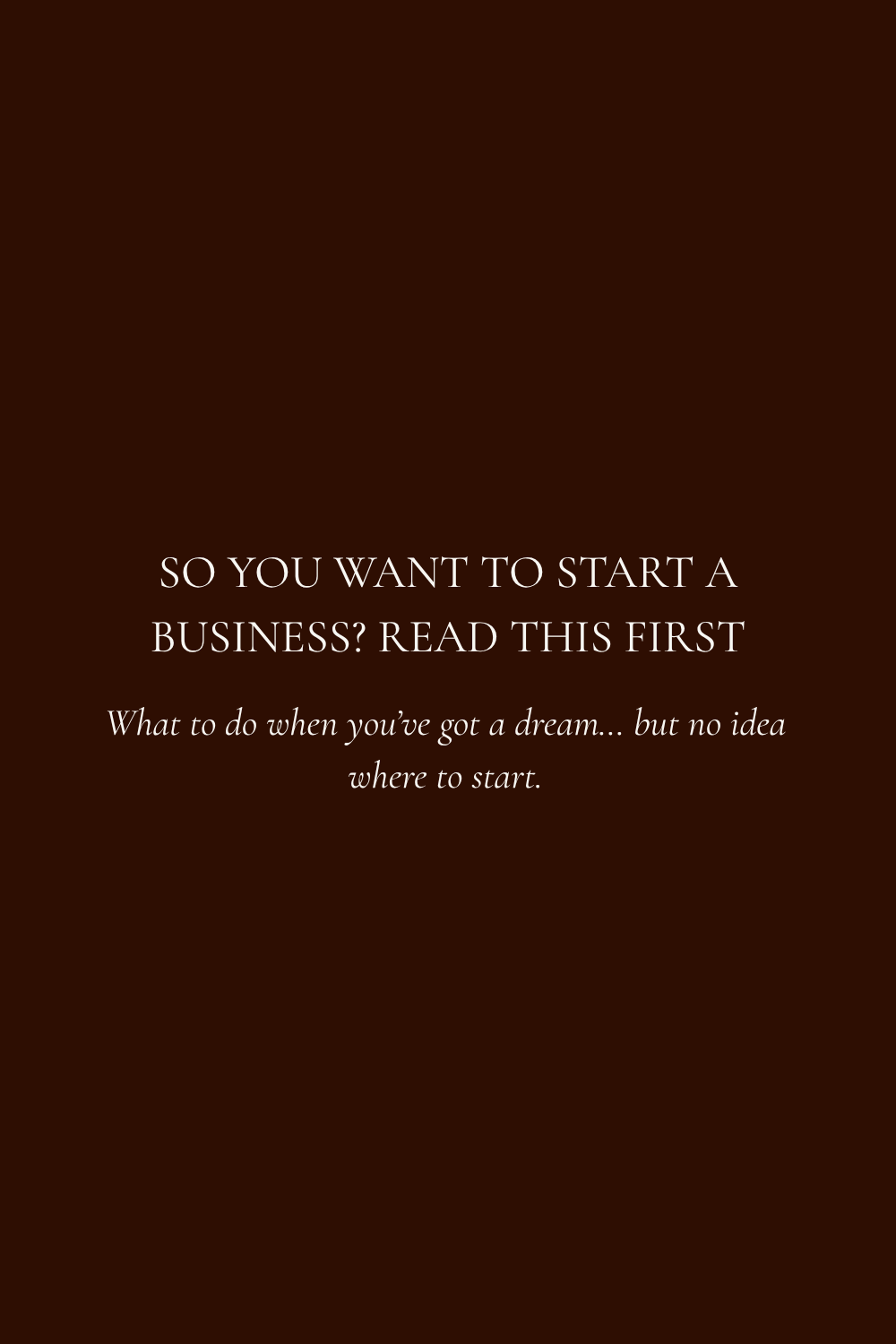What to do when you’ve got a dream… but no idea where to start.
There’s a moment that comes before every business begins.
Not the launch, not the name, not the logo.
The moment where something stirs inside you—a quiet knowing that maybe, just maybe, you’re meant to build something of your own.
But then the spiral begins.
Do I need a business plan? A website? A niche? A following?
What if I mess it up? What if I’m not ready?
If that’s where you are, pause. Breathe. You don’t need to do everything.
But you do need to begin. And here’s how.
Step 1: Clarify the why before the what
Before you stress over business names or social handles, ask:
Why do I want to start this business?
Is it creative freedom? A desire to help others? To be present with your family?
Write it down. Your why becomes your anchor when imposter syndrome tries to drag you off course.
Try this:
Start a note in your phone or journal that answers:
- What do I want this business to give me?
- What kind of life do I want to build?
- What kind of impact do I want to have?
Step 2: Build from what you already know
You don’t need to invent something revolutionary. You don’t need to be the best in your field.
You just need a starting point.
Often, it’s something you’ve already been doing quietly—
Giving advice, designing things, writing, baking, guiding, connecting.
Ask yourself:
- What do people often come to me for?
- What feels easy for me but valuable to others?
- What topic could I talk about for hours?
That’s your gold.
Step 3: Start simple, sell small
You don’t need a full brand, website or offer suite to start.
In fact, the most powerful businesses often begin with a single service or product.
Think:
- One digital product
- One offer
- One workshop
- One client
Get feedback. Refine as you go. Let real-life experience shape your next steps.
Remember: The first version isn’t your forever version. It’s your starting version.
Step 4: Create a container for your ideas
Your brain is going to buzz with ideas. That’s normal (and exciting).
But without a place to put them, it’s easy to get overwhelmed.
Set up a simple system—it could be a notes app, a folder in Notion, or even a Google Doc—where you capture:
- Content ideas
- Offer ideas
- Things you want to explore later
This lets you stay focused without losing momentum.
Step 5: Don’t build in isolation
It’s easy to think you have to wait until it’s “ready” to share your idea.
But the earlier you start talking about it, the faster you build trust and clarity.
You don’t need a perfect launch. You need connection.
Try this:
- Share your journey on Instagram Stories
- Talk about what you’re exploring, building, learning
- Ask your audience questions and start conversations
Building in public helps you refine your messaging and your confidence.
Final Thoughts: Start before you feel ready
Clarity doesn’t come first.
It comes through the doing—one small step at a time.
You’re allowed to start quietly. Imperfectly. With a service that evolves or a product that changes.
The important thing is that you begin.
You don’t need a 6-month plan.
You need your next right step.
Because the truth is: most successful businesses didn’t start with certainty.
They started with curiosity, courage, and a willingness to figure it out along the way.
And that’s more than enough.
